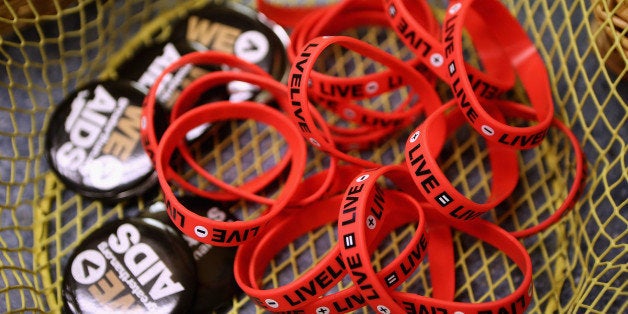
HIV/AIDS continues to plague the African American Community
Now in its 15th year, National Black HIV/AIDS Awareness Day is meant to spark conversations within our community and promote education about the disease, but why? With observance days like National HIV Testing Day and World AIDS Day, why is it important to have a day dedicated to the Black population?
HIV and AIDS affect African Americans, more than any other racial or ethnic group in the United States. According to the CDC, 1 in 16 African American men and 1 in 32 African American women will be diagnosed with HIV in his or her lifetime. Despite advances in testing and protection, there continues to be more than 50,000 new HIV infections every year, with the majority, around 41 percent, belonging to African Americans.
Back in the '80s at the height of the HIV/AIDS epidemic, I spent some years at the Urban League in New York City dealing with health issues for our youth. It was there that I was informed that a young man was infected with HIV and had a partner in one of our teenage pregnancy programs. He had infected both the young woman and her child. I realized that with teenage pregnancy on the rise back then, our young people were not using condoms as birth control, which made it clear that they were also at risk for HIV. Here we are, 30 years later, and although teen pregnancies have decreased nation wide we are still facing the same challenge with unprotected sex and our young people.
Why are the numbers so high?
One would expect that with so much education about HIV and AIDS people should know how to protect themselves and those they love from contracting this disease. One reason the numbers are high is that there are still many misconceptions about the disease. One of the most common misconceptions is that the epidemic is over. Yes, people are living longer and healthier lives thanks to advances in medicine, but the risk of contracting HIV is still high if proper precautions aren't taken. People are also visual, when we saw images recently of people dying from Ebola we understood it, in the '80s we saw people dying from AIDS and we understood it. Today, young people up to the age of 30 were all born before the AIDS epidemic and did not see the tragedy that occurred, so they have a different visual reference and think that the epidemic is either over or the disease is "not that bad." Finally, we have not been the best of public health servants and still have a lot of politics in this epidemic leading to homophobia, racism, and a lack of resources to the hardest hit communities for badly needed local agencies. So there is not as much out there as people believe in the way of support and education. The good news it that we can fix all of this.
What can be done?
The first step in reducing these numbers is to know your status. According to the CDC, more than 1.2 million Americans have HIV and nearly 1 in 7 don't even know they are infected. In 2015, there is no reason not to know your HIV status. For many, especially teens and young adults, cost of a test can be an issue. There are clinics that offer free testing in many areas. Enter your zip code here to find the location nearest to you.
There is also now an HIV test sold at drug stores that you can take in the privacy of your own home, which provides results in only 20 minutes. For those who are not fond of needles, this test uses oral fluid from a mouth swab, no blood necessary.
Those who are sexually active should be tested at least once a year. If you are engaging in any type of risky behavior, test more often and stop engaging in risky behavior!
Remove the stigma
Share your stories about testing. Open the conversation about safe sex. The more it's talked about as a routine part of wellness, the less intimidating it will be. Raise your voice on the issue in your community, whether in social media or directly with a friend or partner and even in church. Sex should not continue to be a taboo subject in our community -- after all, that is how we all got here.